The morning in Gdansk greeted me with sun and dazzling blue sky. I took advantage of the fact that I was walking to the Main Railway Station, so I zigzagged on my way, admiring the town and the sights I saw there.
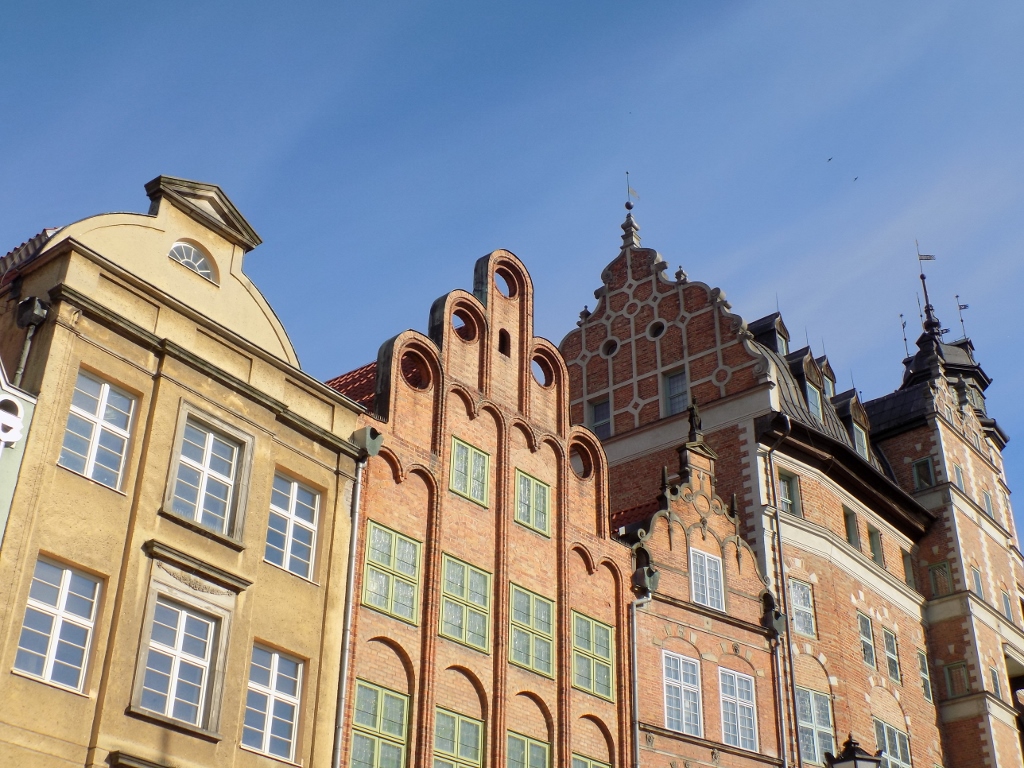 Facades in Gdansk
Facades in Gdansk
Thus I passed by a market and I really liked it. I immediately came up with an idea that it would be good to go there when I returned, provided it still worked, in order to buy raspberries. We Serbs are very proud of the raspberries we grow and love to think that they are the best in Europe, but people say that Poles have excellent raspberries, too. This would be like checking on the competition.
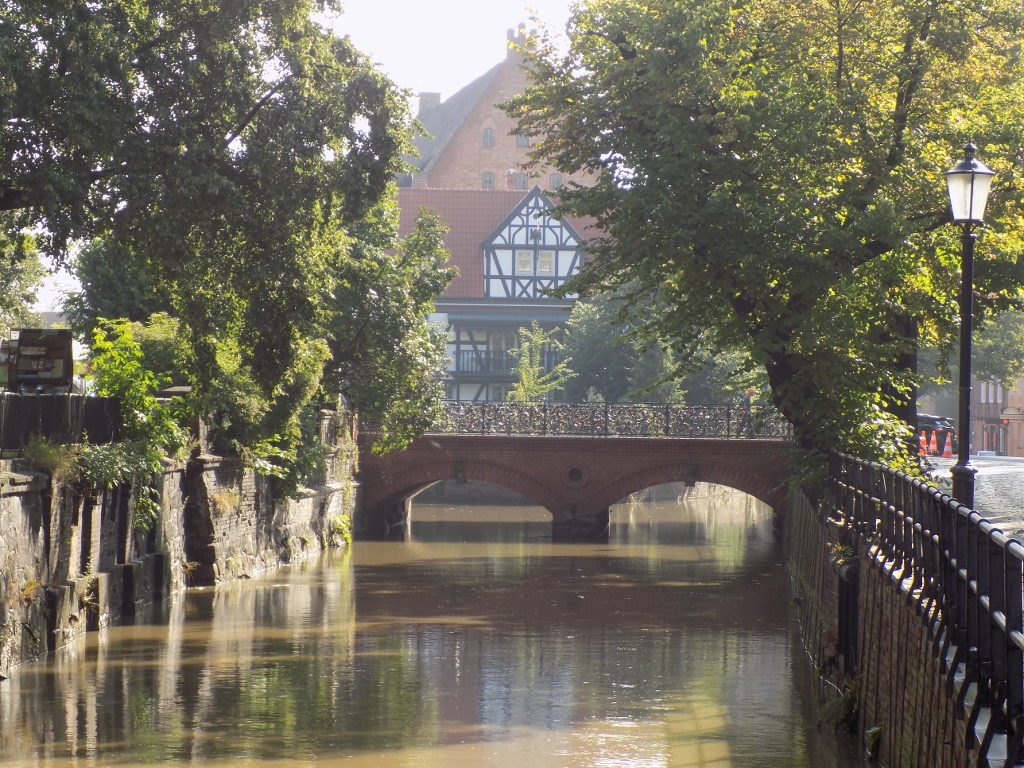 A Gdansk sight
A Gdansk sight
The reason for going to the station was to go to the north and the coast. Namely, my goal was to get to Leba, a tourist destination on the shores of the Baltic Sea. Although I brought my swim suit from Belgrade (very ambitiously or cluelessly), in the meantime it had become completely clear to me that I would neither go swimming nor sunbathe while in Poland. But, Leba is a particularly important place for other reasons as well and not only as a Polish seaside resort. Namely, right next to it there is the Slowinski National Park and that was my real goal. In this national park there are huge sand dunes that keep moving, on an average 9 metres a year!
Still, in order to get to this place from Gdansk it is necessary to change a few modes of transport, for there are rarely direct trains. Thus I first went by train to Lebork and from there moved to a minibus to Leba which is caught in front of the train station. On my way back, I took a coach from Leba to Lebork, then a regional train to Gdynia and finally a local train to the Main Railway Station in Gdansk. Was this all worth it? Absolutely!
When I got to Leba, first I went to the nearby Tourist Office and there I got basic instructions. It is possible to cover it all on foot, which I had no time for, so I opted for a mixed version. First I walked to the main entrance into the National Park which turned out to be over 2 km from the Tourist Office. I miscalculated looking at the map I got (which serves only for a rough orientation). I could have taken one of the numerous electric minibuses that cover this distance. On the other hand, I did find it interesting to see Leba even along its edges. A typical seaside resort – throngs of tourists, burdened with different bags and beach supplies, heading for the sea. Along the way, a large number of restaurants, cafés and in one place next to each other two coolers – one containing all sorts of ice-cream and the other all sorts of dried fish! In addition, since this was a road that led to a beach, there were shops selling everything such a place requires – from small plastic buckets and shovels to beach towels and plastic screens that are used as a protection against wind and the sand carried by the wind.
At certain point, I left the crowd and followed a nice, wide path which, parallel to the road, led towards the entrance into the National Park. Although all of this seemed to take too much of my time, I did enjoy the fabulous forest I was going through, enjoying the tall conifers that smelled beautifully.
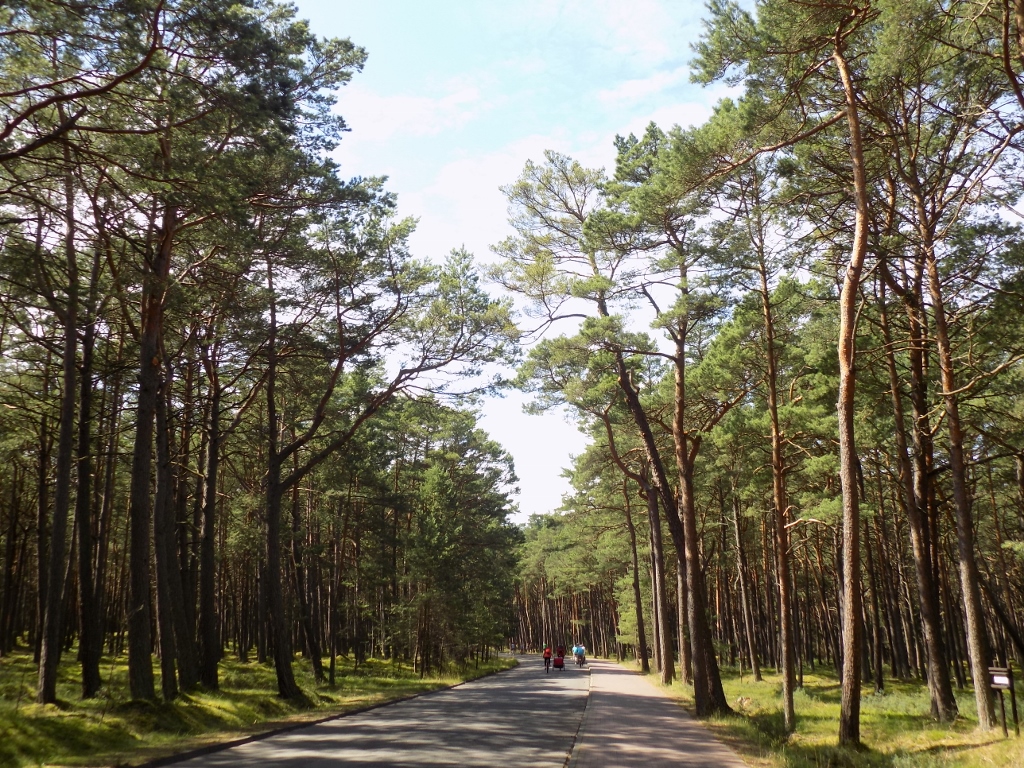 Road leading from Leba to the entrance into the Slowinski National Park
Road leading from Leba to the entrance into the Slowinski National Park
I really loved and enjoyed Poland, but unless you speak different languages, Polish primarily, you are in a pickle. I mostly managed well, occasionally even using Serbian on account of many linguistic similarities, especially if you try to do your best, but in this national park the language that was most useful was German. Thus the man who actually directed vehicles towards the parking lot kindly suggested that after I purchased the ticket, I should go to the nearby lake in order to take photos. The woman at the counter also spoke basic German. Just like I do, so it all went well.
On the other hand, I got an impression that Poles seemed to be sort of enough to themselves. By far most of the tourists that I kept seeing during my stay were Poles and it seemed therefore that they actually had no motive to learn foreign languages for the sake of tourists. Usually countries like the revenue coming from tourism or rather from foreign tourists, but there are very few, like French for instance, who can really afford not to want to speak English. What puzzled me particularly in Poland was how few young people spoke English. On the other hand, those that do know it, even a little bit, really do their best to help you. (By the way, none of this is meant as a criticism, only as establishing facts and sharing information.)
The Slowinski National Park is rather big and there is primarily a myriad of different birds to be seen there, including some rare species, but this is actually for proper experts. What tourists are mostly interested in is a visit to those sand dunes. There are around 5.5 km from the entrance into the National Park to the dunes and this section may be covered on foot, by bicycle or by an electric mini-bus. I chose the third option. Still, I took only a one-way ticket, since my plan was to walk along the beach on my way back.
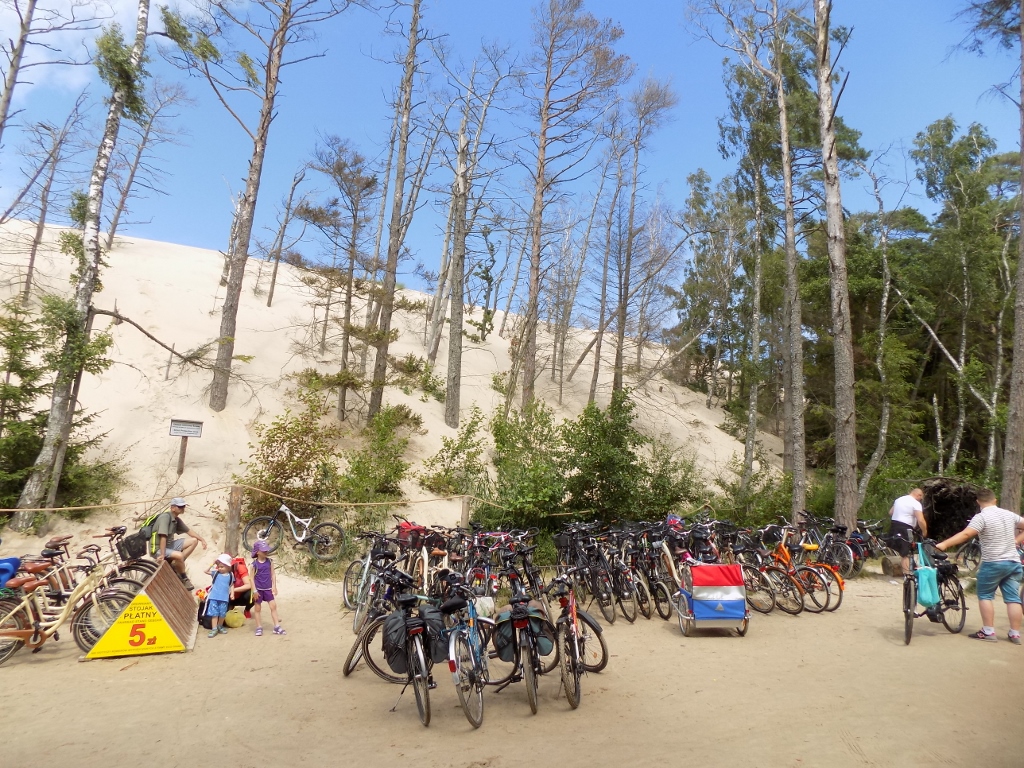 Slowinski National Park, end of the “road” for the transportation, whether this was a mini-bus or a bicycle
Slowinski National Park, end of the “road” for the transportation, whether this was a mini-bus or a bicycle
When I reached the end of the route covered by the mini-bus, where the large dunes started, I first took off my shoes and put them in my small backpack. Then I followed a sand path leading by the forest and soon there was a slope to climb. Walking up on sand is not simple and easy, but the best thing is to follow the footprints of the people who have already passed there and use them as steps. On the top of that steep slope, there was an open vista on another, even larger, but less steep dune that had to be climbed. There is also a fence which separates the section not to be walked over by tourists.
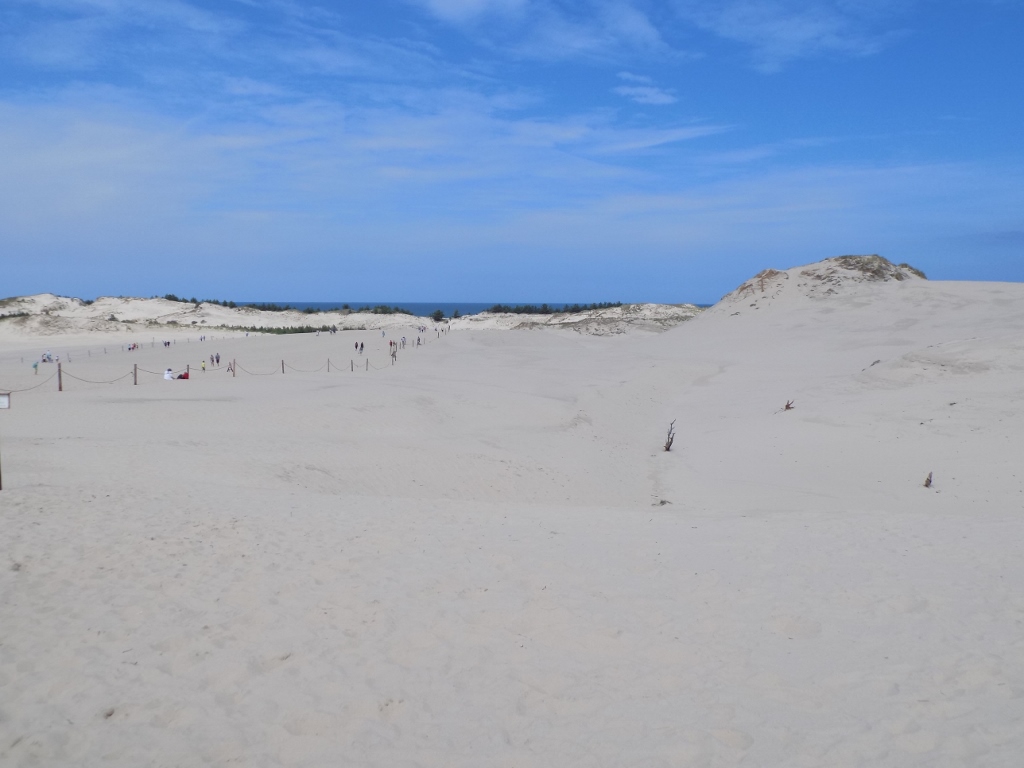 Slowinski National Park, there are glimpses of the Baltic Sea behind the sand
Slowinski National Park, there are glimpses of the Baltic Sea behind the sand
So, what can I say here? I was delighted. The sights that are so simple were exceptionally beautiful. I went, of course, to the other dune and in whichever direction I turned I was filled with admiration before such beauty. I also saw the way leading towards the shore of the Baltic Sea I could observe in the distance.
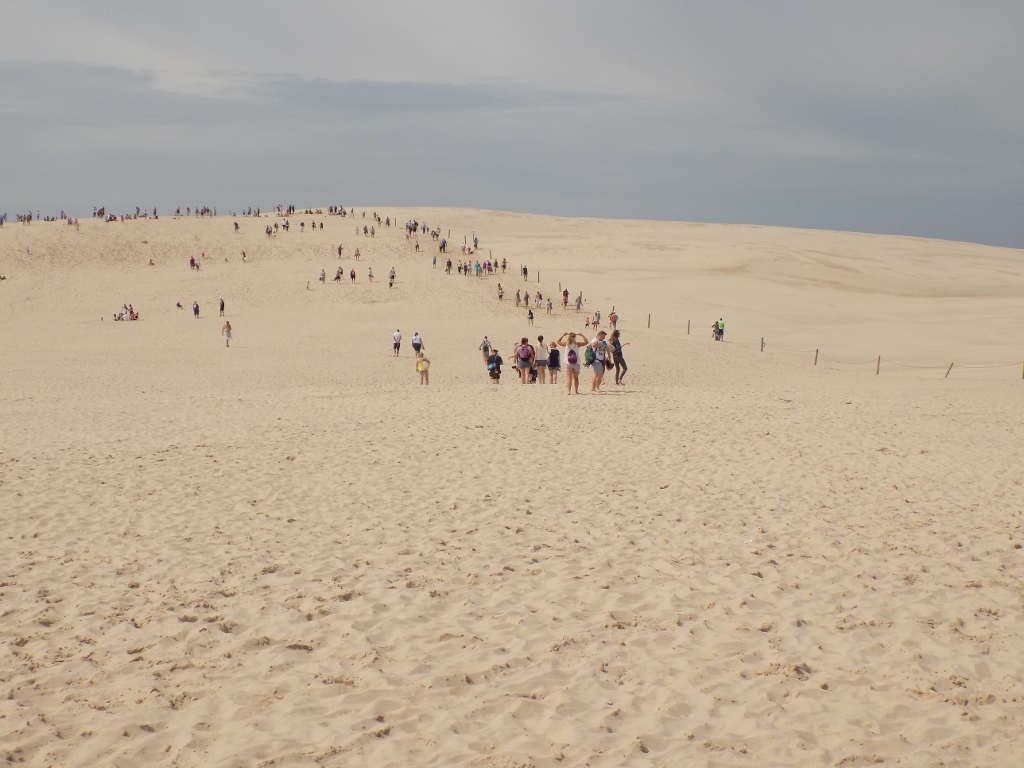 Slowinski National Park, climbing to the top of the biggest dune around
Slowinski National Park, climbing to the top of the biggest dune around
 Slowinski National Park, view from the top of the dune at the Baltic Sea (on the right-hand side, there are people who are tiny in the photo)
Slowinski National Park, view from the top of the dune at the Baltic Sea (on the right-hand side, there are people who are tiny in the photo)
After staying there for a short while in order to take photos from every possible angle, I slowly headed to the sea, making a number of breaks since each step provided me with a new point of view at the surrounding landscapes.
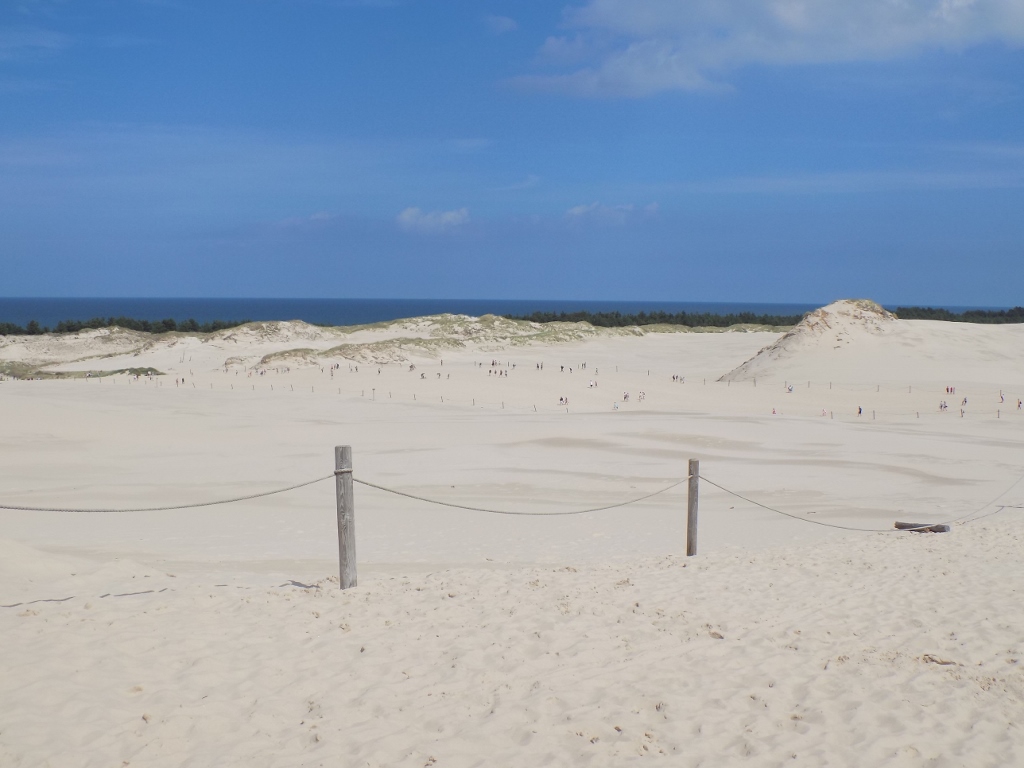 Slowinski National Park, the fenced part is not for tourists
Slowinski National Park, the fenced part is not for tourists
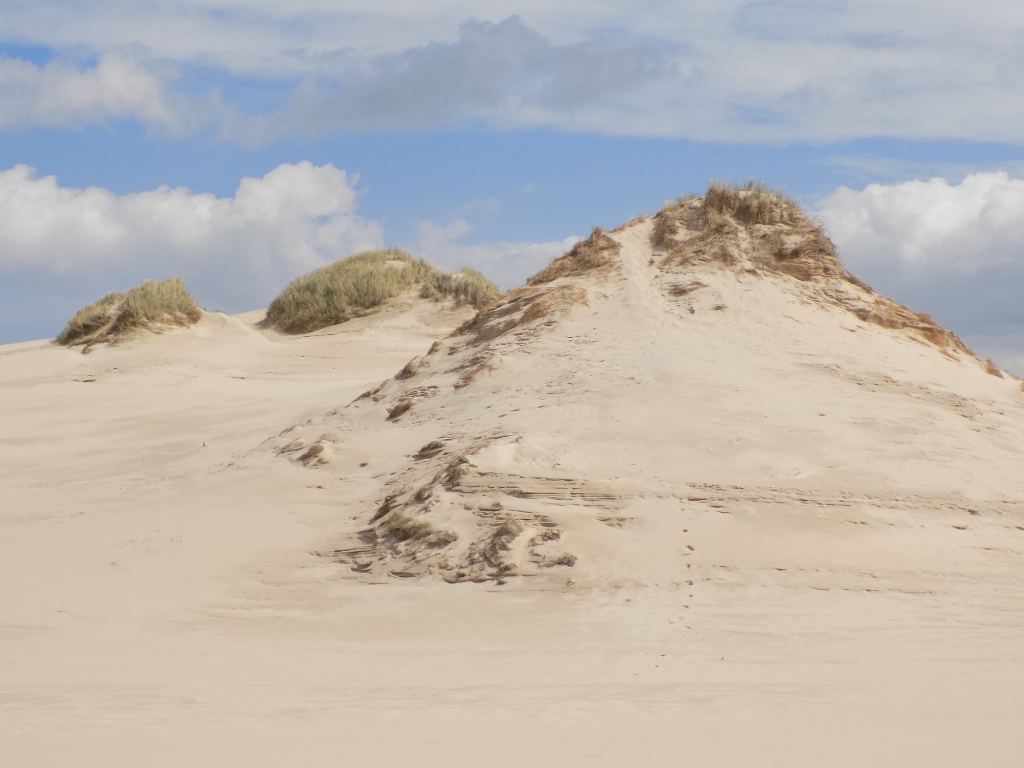 Slowinski National Park, a detail
Slowinski National Park, a detail
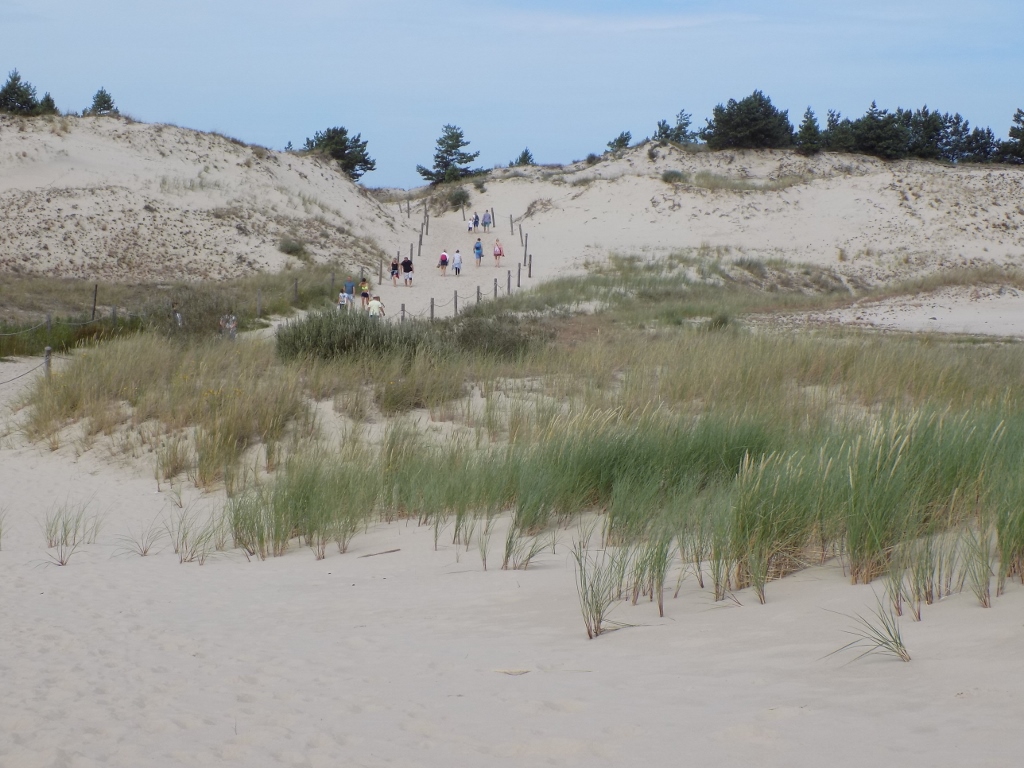 Slowinski National Park, a path leading towards the sea
Slowinski National Park, a path leading towards the sea
When I finally reached the coast, I started walking along the beach that was splashed by the small waves of the cold Baltic Sea. From this point, there were 8 km to Leba! I started walking rather briskly, but it still took me an hour and a half at a very intense pace.
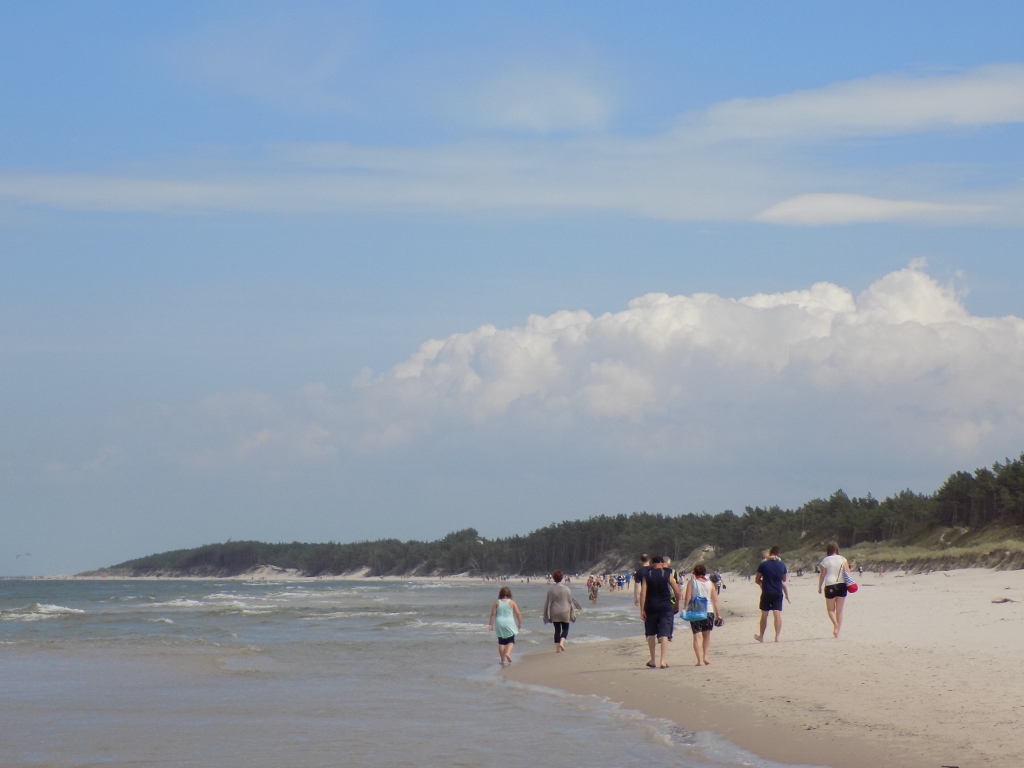 Walking along the Baltic Sea beach in the direction of Leba
Walking along the Baltic Sea beach in the direction of Leba
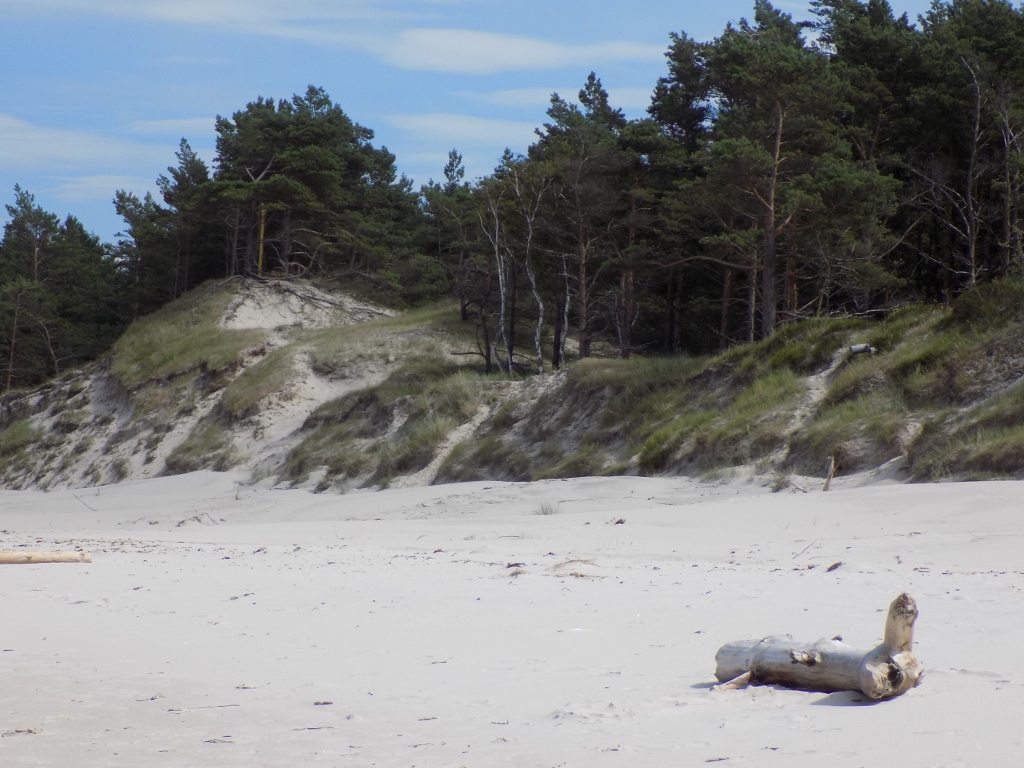 A detail from the Baltic Sea beach
A detail from the Baltic Sea beach
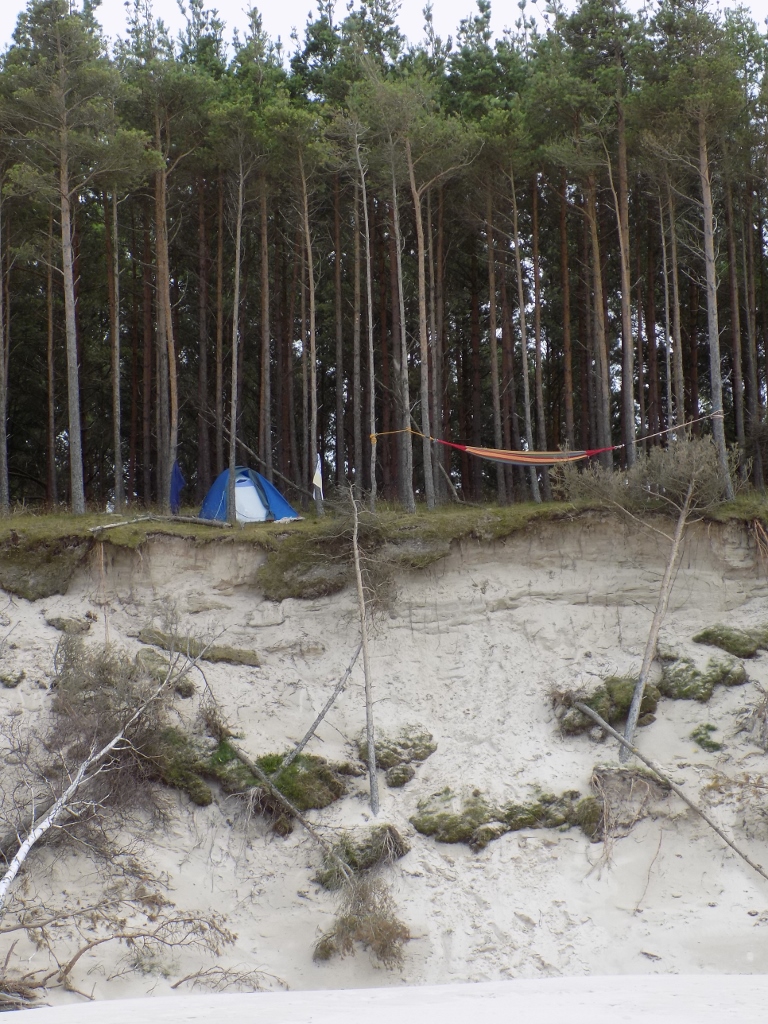 A tent and a hammock with a view
A tent and a hammock with a view
Although this walking along a sand beach was a very nice experience which I certainly would not miss out on, realistically it should take at least two hours. Eventually I reached a section with a lot of people, but it seemed that it was children who mostly enjoyed the splashing in the cold sea (to my mind) and playing with sand. There I finally left the beach and headed along the road leading into town, but first I had to sit on a concrete wall in order to clean my feet well from all the sand.
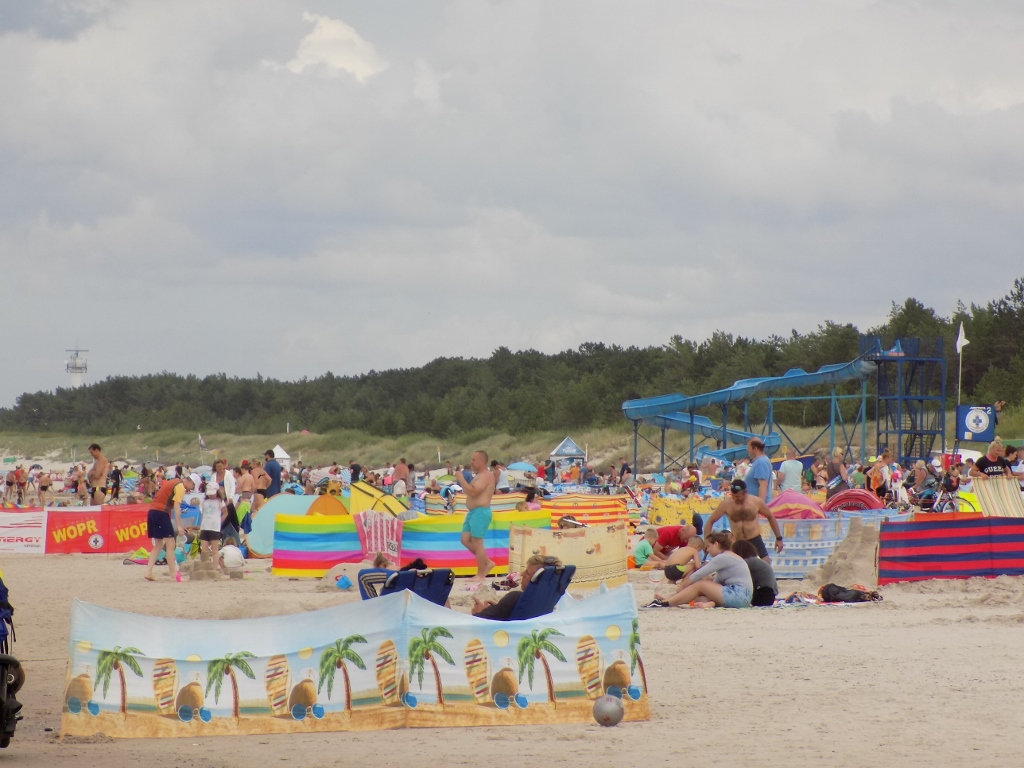 Beach in Leba
Beach in Leba
Upon my return to Gdansk I decided to walk a little more around the town. There was still daylight and I enjoyed the walk around the picturesque centre of the place. The green market had closed in the meantime, so my tasting of locally grown raspberries had to wait for some other time.
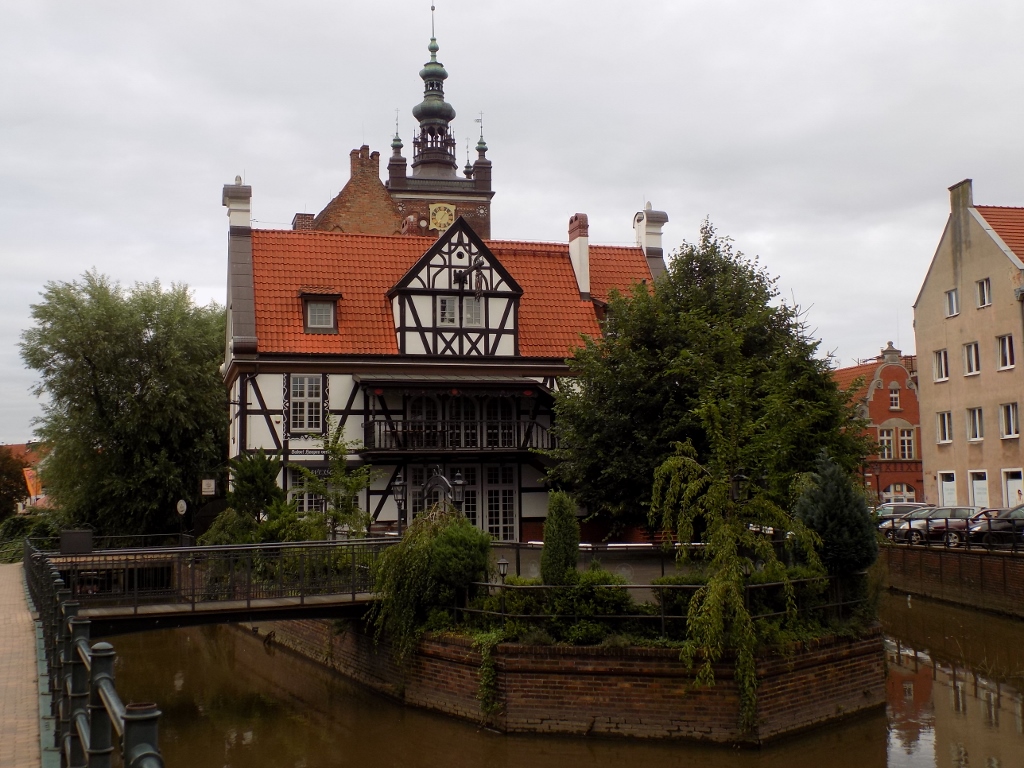 Canal Raduni that directs water towards the Large Mill
Canal Raduni that directs water towards the Large Mill
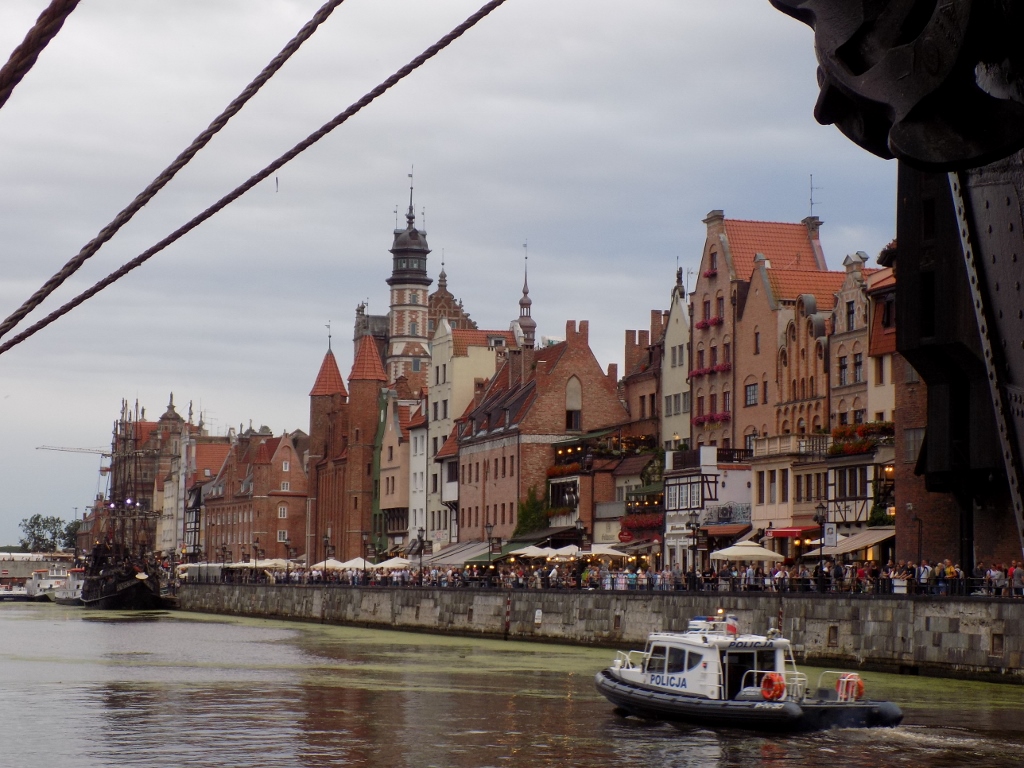 Gdansk, the Motlawa bank
Gdansk, the Motlawa bank
Soon the night started to fall, but that did not take anything away from the enjoyment.
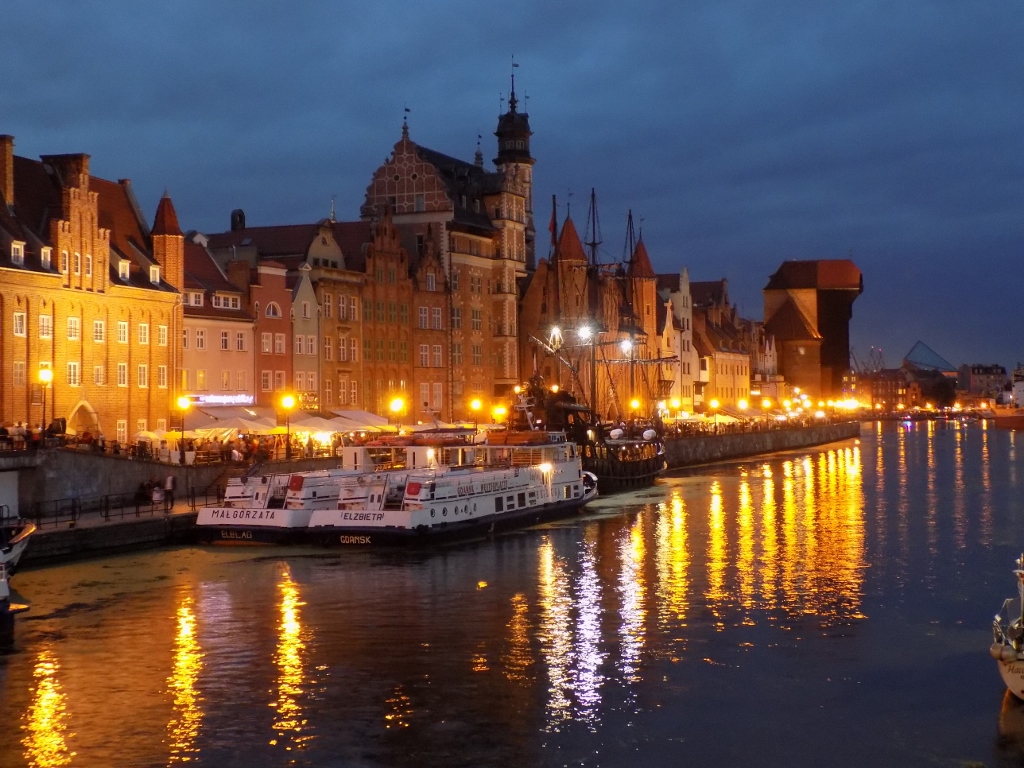 Gdansk at night
Gdansk at night
The following day, I was again greeted by bright blue sky without a single cloud. And that was perfect, for I was going to a beach again. This time, my destination was Hel (!), near which there is a large sandy beach. The fact that the name of the place is pronounced in the same way as “hell” is, of course, a source of numerous jokes in English and I couldn’t help but make one on the postcard I sent to my New York friends. So, I reported to them that at the time it was a rather warm and even a sunny day in Hel.
So, I decided to take a water tram to Hel that day (and it would actually be quite interesting if there were public transportation to hell where you can even buy a return ticket). This “tram” was a rather big catamaran. It took two hours from Gdansk to Hel and that was very nice, especially on such a beautiful summer day. I’m sure my impressions would have been significantly different, had I had pouring rain all the time, as was the case on some of the previous days.
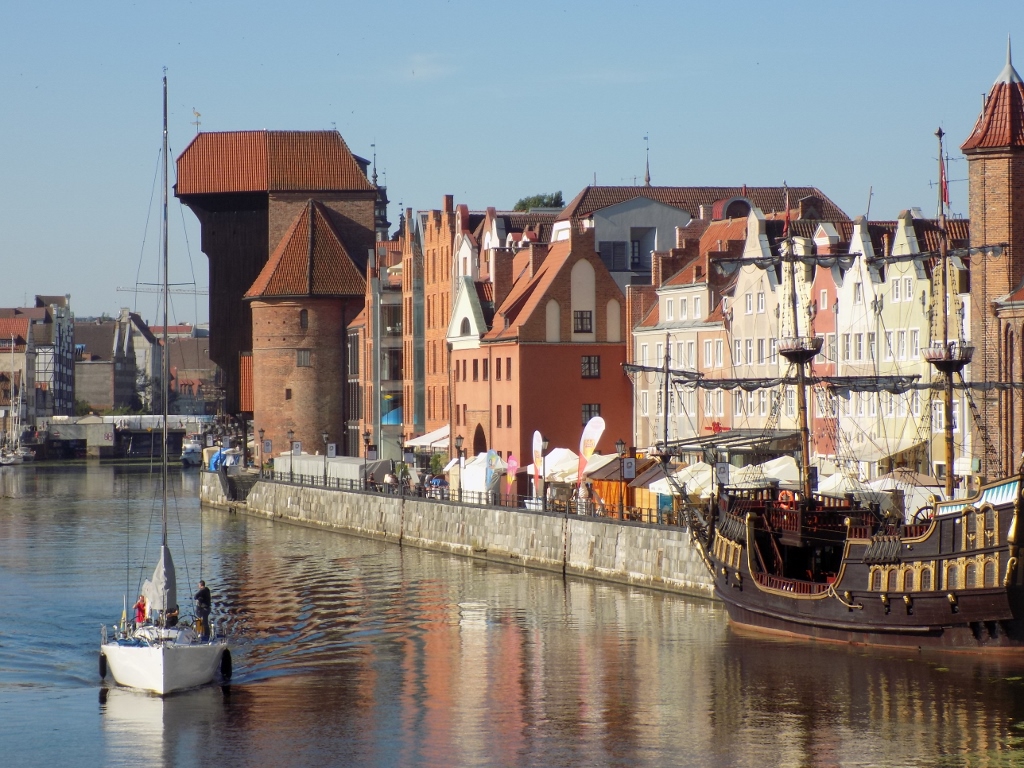 View at Gdansk from the catamaran
View at Gdansk from the catamaran
As the vessel slowly moves away from the pier in the Old Town and starts to sail towards the Baltic Sea, one can really enjoy the stunning views of Gdansk at first. These images, however, soon change into unattractive sights of large shipyards and port. After all, it was here that the final rebellion against the old regime started, led by the Solidarity trade union headed by Lech Walesa, who was later the first democratically elected President of Poland.
While the ship still slowly goes along the river, now along a branch of the Vistula called the Dead Vistula (Martwa Wisla) and before it gets to its confluence into the Gdansk Bay, on the right-hand side there is a Westerplatte monument. It was precisely here, on the narrow peninsula, that WWII started on 1 September 1939. Namely, before WWII Gdansk belonged to Germans and was called Danzig, while Poles had one of their military sites right on that peninsula. In addition to the bombing of Poland which also started on 1 September 1939, this was the place where a first direct confrontation between two armies took place in this war.
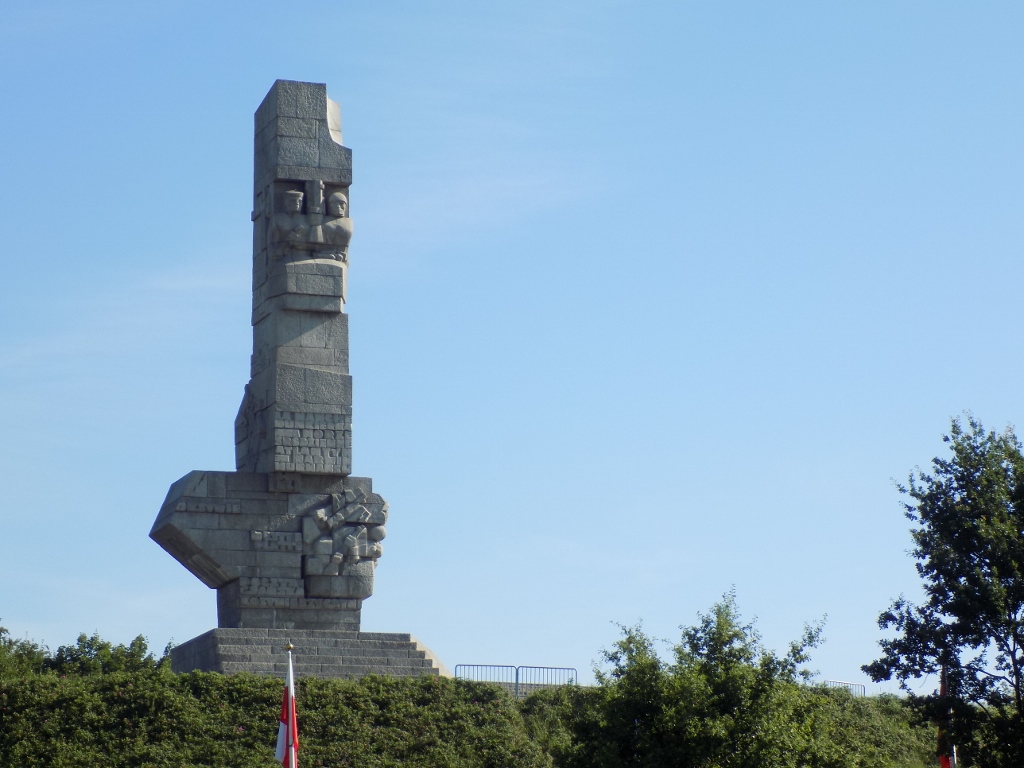 Monument to Polish defenders at the Westerplatte peninsula
Monument to Polish defenders at the Westerplatte peninsula